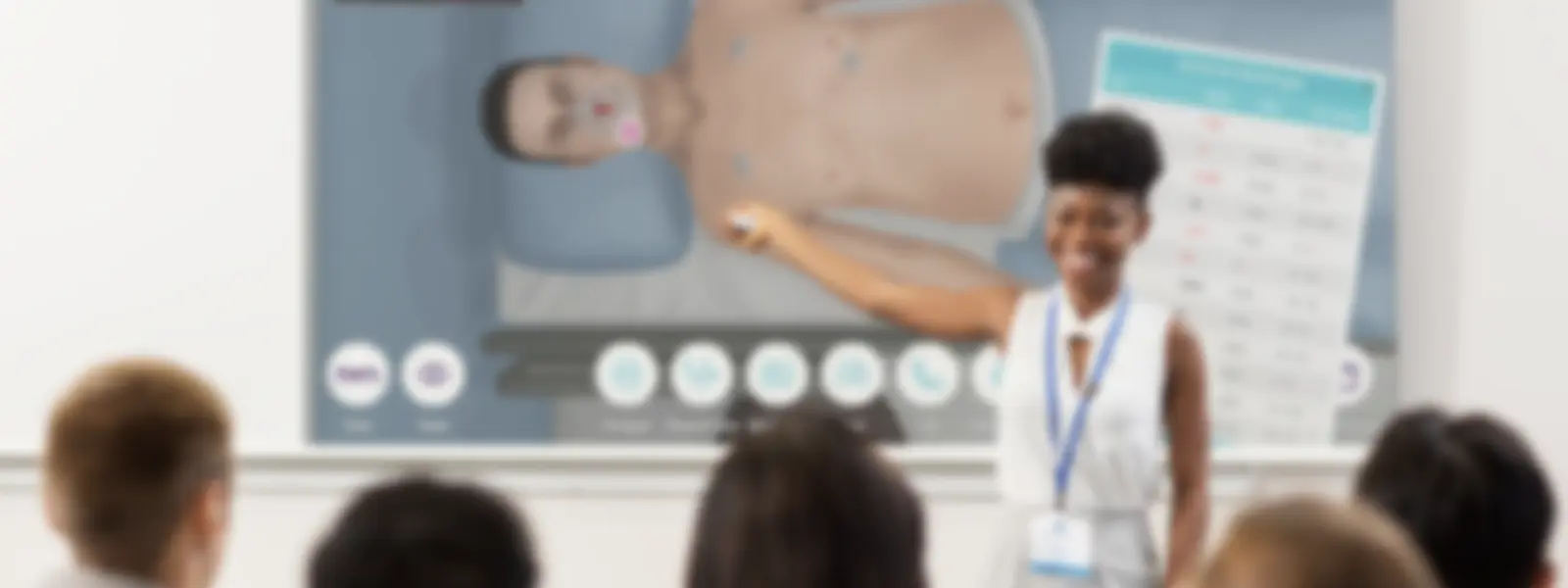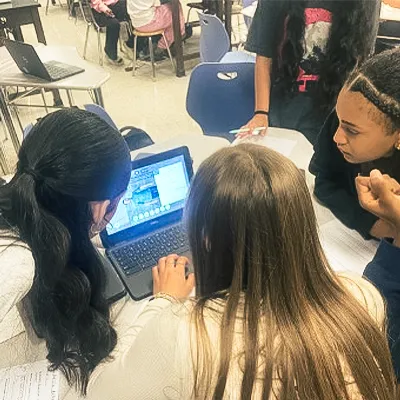The Impact of Digital Health Education in High School
In the dynamic landscape of healthcare education, traditional methods are encountering significant challenges. With shorter hospital stays, specialized care, and a scarcity of clinical mentors, the direct involvement of students in patient care experiences is increasingly limited. Consequently, there is a growing disparity between theoretical teachings and practical clinical exposure, particularly in low- and middle-income nations where the demand for healthcare workers is most critical.
Acknowledging these obstacles, the global medical education community has embarked on a quest for innovative solutions to enhance relevance, broaden access, and accelerate the learning process for health professions. Among these solutions, digital education, often referred to as e-learning, has emerged as a promising avenue for transformation.[2]
Virtual Patients: The safest environment for clinical practice
Digital health education encompasses a range of approaches, from offline learning to mobile applications and serious games. Within this domain, virtual patients stand out as a revolutionary tool for immersive learning experiences. They consist of interactive computer simulations that replicate real-life clinical scenarios, providing learners with the opportunity to navigate complex medical cases in a safe and controlled environment.[2]
In virtual patient scenarios, learners’ step into the roles of healthcare providers, tasked with gathering clinical information, formulating diagnoses, and devising management plans. Guided by the framework of action and reflection, these simulations foster critical thinking and decision-making skills essential for clinical practice. [1,2]
The versatility of virtual patients lies in their ability to simulate a diverse array of medical conditions, from routine check-ups to rare emergencies. Learners can engage with these simulations repeatedly, refining their skills without compromising patient safety. Moreover, they offer immediate feedback, enabling learners to reflect on their decisions and improve their approaches iteratively. [1,2]
Preparing the next generation of healthcare professionals
Different types of virtual patients cater to various educational objectives. Interactive case scenarios allow learners to interact directly with simulated patients, while computer-based simulations present cases through multimedia interfaces. Regardless of the format, virtual patients serve as invaluable complements to traditional teaching methods, enriching the educational experience and bridging the gap between theory and practice. [2]
The integration of virtual patients into High school & CTE curricula has garnered widespread acclaim for its potential to revolutionize healthcare education. By providing immersive learning experiences, virtual patients empower learners to develop clinical competencies dynamically and interactively. [1,2]
As the field of digital health education continues to evolve, virtual patients are poised to play an increasingly central role in shaping the future of healthcare education. By leveraging technology to simulate real-world clinical scenarios, virtual patients hold the promise of translating theory into practice and equipping the next generation of healthcare professionals with the skills they need to thrive in an ever-evolving healthcare landscape. [1,2]
In five studies comparing virtual patients as a supplement with traditional education in the domain of knowledge, four concluded that the group exposed to virtual patients scored better than the control group (Traditional education) [2]
In fourteen studies comparing virtual patients with traditional education, nine concluded that virtual patients resulted in better skills outcomes. They showed larger effects than lectures, reading exercises, group discussions, and activities comprising traditional education methods, including hands-on training with mannequins. In terms of skills improvement, they particularly enhanced clinical reasoning, procedural skills, and a mix of procedural and team skills. [2]
Virtual Patients for High School Health Science
In high school settings, Body Interact can be integrated into medical terminology, pharmacology, health science, or anatomy courses to provide students with hands-on experience in diagnosing and treating medical conditions. By interacting with virtual patients, students can develop critical thinking, problem-solving, and decision-making skills essential for careers in healthcare.
Furthermore, Body Interact can enhance CTE programs focused on healthcare professions by offering students the opportunity to explore different aspects of patient care in a safe and controlled environment. Whether aspiring to become nurses, medical assistants, or paramedics, students can benefit from realistic simulations that mirror the challenges they will face in their future careers.

One of the key advantages of Body Interact is its versatility. The platform covers a wide range of medical scenarios, from routine check-ups to emergencies, allowing students to practice various skills such as taking patient histories, performing physical examinations, and administering treatments.
Moreover, it provides immediate feedback to students, allowing them to assess their performance and identify areas for improvement. This feedback mechanism not only enhances learning but also fosters a sense of accountability and responsibility in students as they strive to deliver optimal patient care.
Integrating Body Interact into High School and CTE programs can also address some of the challenges faced by traditional healthcare education methods.
With limited access to clinical placements and shortages of clinical mentors, many students struggle to gain practical experience in real healthcare settings. Body Interact fills this gap by offering a realistic alternative that is accessible anytime, anywhere.
Start exploring Body Interact scenarios today!
Schedule a demo with the Body Interact team
References
1- Thisgaard M, Makransky G. Virtual Learning Simulations in High School: Effects on Cognitive and Non-cognitive Outcomes and Implications on the Development of STEM Academic and Career Choice. Frontiers in Psychology. 2017 May; 8:805. doi: 10.3389/fpsyg.2017.00805
2- Kononowicz AA, Woodham LA, Edelbring S, et al. Virtual Patient Simulations in Health Professions Education: Systematic Review and Meta-Analysis by the Digital Health Education Collaboration. J Med Internet Res. 2019;21(7):e14676. doi:10.2196/14676









